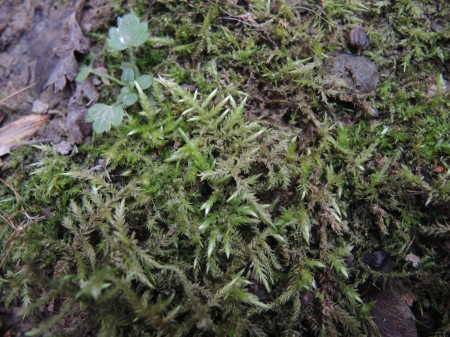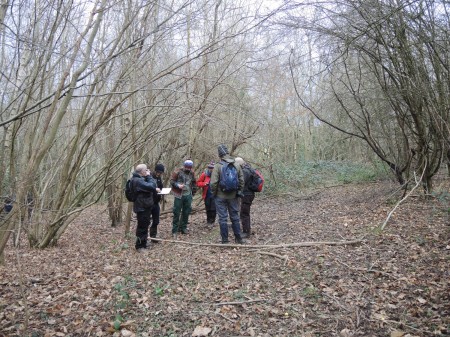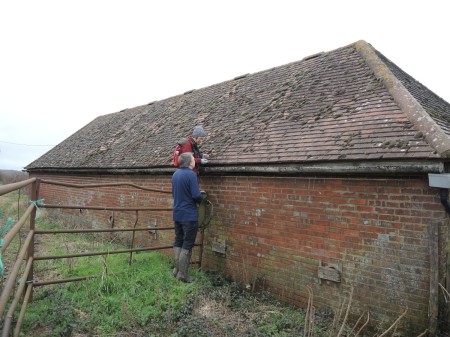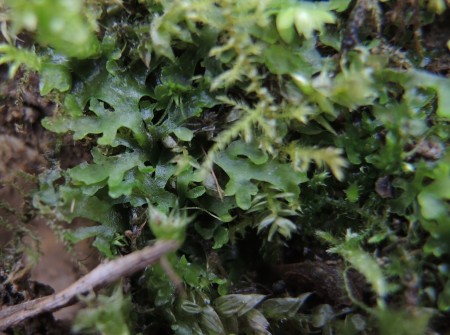BBS SE Group field meeting, 3 February 2024
As we steadily try to survey the relatively unrecorded parts of the more easterly areas in East Sussex, we keep finding interesting bits of the county that are new to us. The area south of Crowhurst was one such landscape, and it was therefore particularly appreciated that we were accompanied by John Feltwell, Paul Johnson and other members of the Crowhurst Environment Group. John has been bringing his expertise to the compilation of the parish’s Biodiversity Audit for some years, and Paul is the warden of Quarry Wood, so it was good to be able to share our respective interests, and to have such a large group.
Sitting in the Weald, Crowhurst sits on the Wadhurst Clay, with the Ashdown Formation, and some silts along the river valleys. At the lowest point on our route we were only just above sea level, though there was much up and down, which took us through some patches of Ancient Woodland, as well as through new anthropogenic habitats. This general area is also where Jacqueline Rose and Sian Matthews found Myosurus minimus (Mousetail) a decade ago, so we knew it could potentially harbour interesting stuff.
True to form, we started off within a hundred metres or so of our parking spaces, and spent a good while exploring the churchyard. This part of Crowhurst is in the extremely well-recorded and bryo-diverse tetrad TQ71L, in which Tom Ottley recorded extensively in Fore Wood, but the spaces around churches are always worth a visit as they can harbour unexpected species, and are in any event a good place to introduce beginners to some of the common flora.
The common species included the thallose liverwort Lunularia cruciata, plus mosses of turf and banks: Rhytidiadelphus squarrosus, Brachythecium rutabulum, Plagiomnium undulatum, Fissidens taxifolius, Calliergonella cuspidatum and Mnium hornum. On the damp shady wall of the church were Neckera complanata and Tortula marginata, and a variety of species on more exposed walls. In all, we found 37 different species in the churchyard, which is a very respectable number. Sue tells me that Tom also found Didymodon vinealis on the church wall in 2015 but that was the only thing we missed. However, we added Bryum dichotomum, Pseudocrossidium revolutum, Weissia controversa and Barbula convoluta to the tetrad total, which now stands at 134 taxa, an astonishingly high number. In Sussex it is only the High Weald that is likely to have over 100 bryophyte species in a 2×2 km square, and only sites such as Eridge Rocks and the best of the other sandstone outcrops have 140 or more.
Heading south, we finally made it into the target tetrad, where we found Bryum rubens with its red tubers, and a nice cluster of common (and less common) epiphytes: Lewinskya affinis, Pulvigera lyellii, Cryphaea heteromalla, and the liverworts Metzgeria furcata and Radula complanata.
Then, over the footbridge into Ring Wood, a small area of Ancient Woodland that occupied us for some time. The woodland floor and banks had a good range of typical acid species, such as Pseudotaxyphyllum elegans, Dicranella heteromalla and Polytrichum formosum, and at least one of the Ash trees had a nice patch of the elegant Homalia trichomanoides on its bark. It was also a good opportunity to show everyone the tiny thread-like liverwort Myriocoleopsis minutissima with its five-pointed perianths, and the very cute Orthotrichum pulchellum, both of which were on Sweet Chestnut. The stream bank itself had some liverworts, including Conocephalum conicum on the water’s edge, and Chiloscyphus polyanthos partially submerged.
It had taken us quite a long time to get to the woods, so we stopped here for lunch, and this was also the point where most of the local members of our party departed and headed back to the village. We carried on, finding the bright-tipped Cirriphyllum piliferum on the woodland floor, and on a Crab Apple was Metzgeria violacea with gemmae on its leaf tips.
Further south and the walls and disturbed ground around Buckholt Farm occupied us for a while. This late sixteenth century house was remodelled in 1670, and is now home to several common mosses, among which were Bryum argenteum, Syntrichia ruralis, Barbula unguiculata and Ceratodon purpureus.
The bank along Buckholt Lane also proved to be quite productive, with Brachythecium rivulare among the damp areas, and the rather neat Zygodon conoideus growing in the hedge. Pete found Tortula acaulon, and the shiny leaves of Neckera complanata also caused us to stop for a while. Further along the lane, a bank had copious amounts of fruiting Weissia controversa var. controversa and also some Fissidens viridulus, which was a nice combination.
The last major stop was to explore along the stream where it crossed the lane. Nearby were the rather beautiful liverwort Riccardia chamedryfolia and the pale moss Pohlia wahlenbergii. Though getting into the stream itself was a bit slippery, it was certainly worthwhile as it was the site of several more species new for the tetrad, Thamnobryum alopecurum, Rhynchostegium riparioides, Pellia endiviifolia and Plagiochila asplenioides, demonstrating the range of pH that the muds of the bank offered.
By this time I had realised that I had badly misjudged how long it would take us to get around the loop I had planned, so the final mile or so was a bit of a march, navigating around the new road development and speeding back to the church. However, we were still keeping an eye out for ‘new’ species, and the recently-disturbed ground near one of the new road bridges had patches of the tiny, bright-green moss Pseudocrossidium hornschuchianum, with Didymodon nicholsonii on some tarmac on Royal Oak Lane.
The hitherto largely unrecorded tetrad TQ71K now has 64 taxa added to the list, which is a decent total for one visit of a regular Wealden tetrad. There are still a few common things that we didn’t find and we didn’t locate any good sites for arable species on our route, so another visit could plausibly take that total up to 80, which is our rough target for the Weald. Finally, Sim, Ben and Sue recorded a few things near the station adding two new species to TQ71R, which now has 96 taxa recorded.
Thanks very much to Sonia Plato and the Crowhurst Environment Group.










